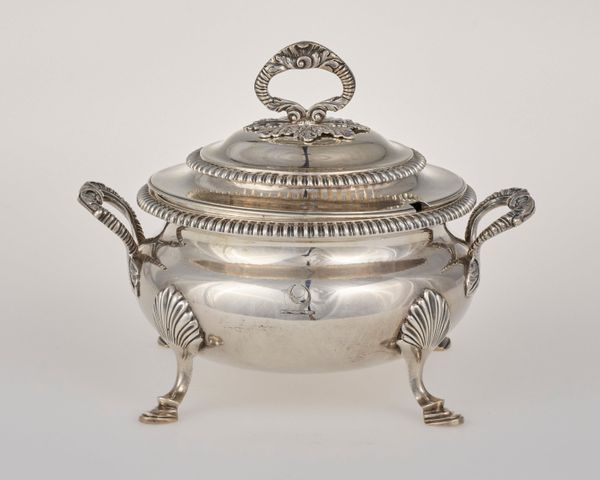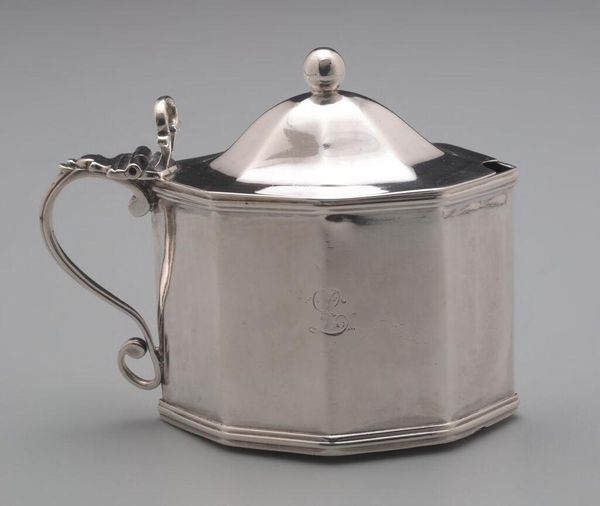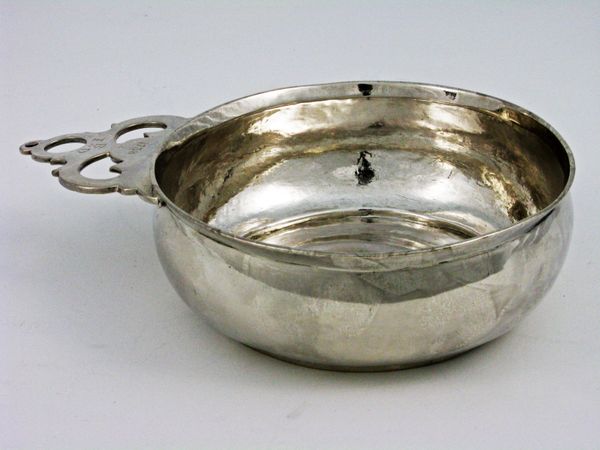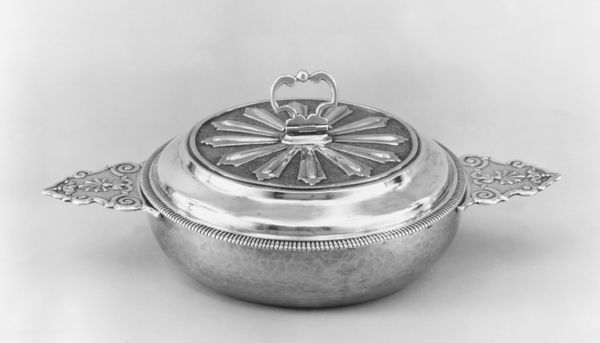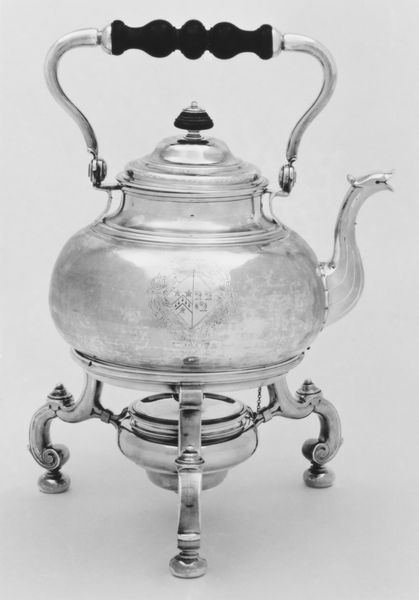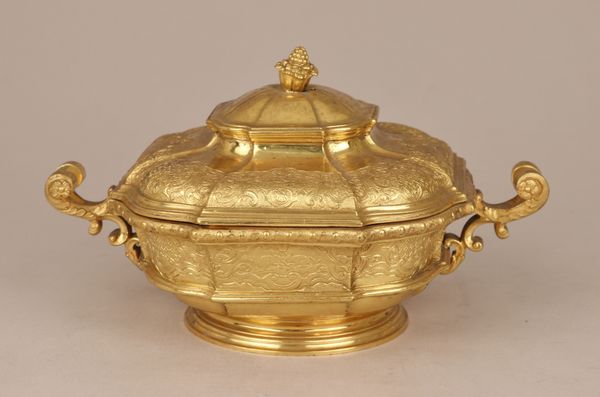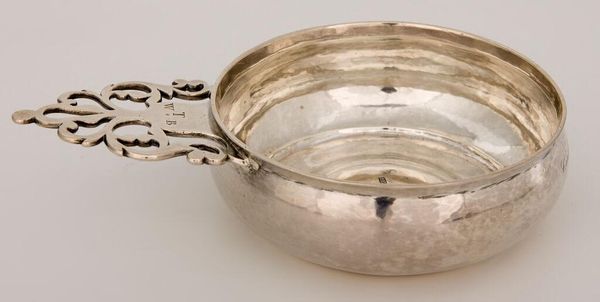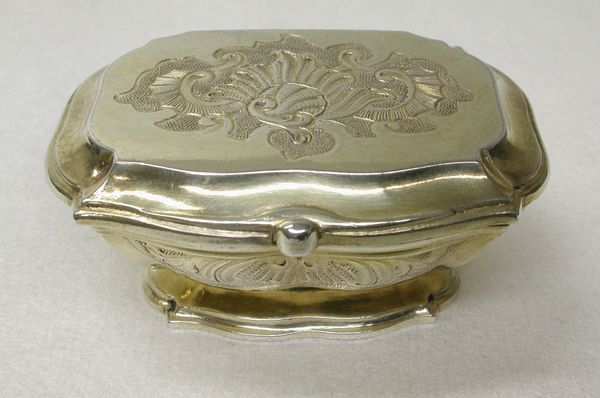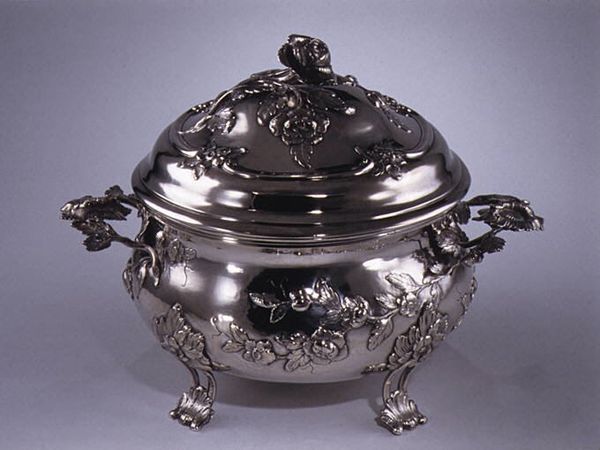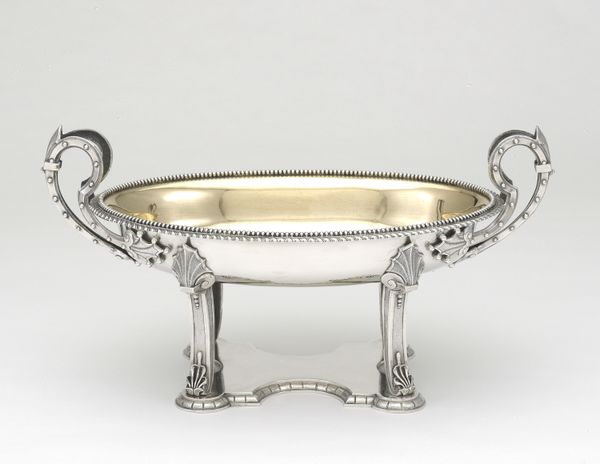
metal, ceramic, sculpture
#
metal
#
ceramic
#
england
#
sculpture
#
ceramic
#
decorative-art
Dimensions: 8 x 9 x 9 in. (20.32 x 22.86 x 22.86 cm) (at handles)
Copyright: Public Domain
Curator: What strikes you most when you first look at this tureen? It was crafted around 1880, an intriguing example of Christopher Dresser's designs, currently residing here at the Minneapolis Institute of Art. It combines metal and ceramic elements. Editor: There’s a distinct geometry at play; those three legs remind me of laboratory equipment, giving it a quasi-scientific yet functional presence. It seems oddly modern for its time, actually. Curator: Indeed. Dresser was at the forefront of the aesthetic movement, rejecting Victorian ornamentation for simpler, more functional forms. The design owes much to Japanese industrial art. Editor: You see it, too! Those three-legged supports lift it like some offering. I wonder how many would have really picked up on such overt eastern themes back then? Is it simply borrowing from afar, or truly embracing something new? Curator: Dresser actively studied Japanese art, so he likely knew he would appeal to those seeking to infuse modern British decorative art with fresh life from around the globe. However, many saw that approach as a threat. The metal finish also gives off a highly utilitarian appeal and may seem out of place on decorative dining ware to modern eyes, further pushing the envelope of conventional sensibilities in England. Editor: Its sleek surface is almost begging to reflect narratives and social values of a modern British empire in search of its own definition and new aesthetics, all through symbolic references to international partnerships and Eastern ideas. Yet, beneath the surface, who determines what gets included in history and in museums? That’s my million-dollar question here. Curator: Food for thought, literally. Thinking about the function, consider it a communal serving vessel: a site of conversation, ritual, perhaps social commentary as much as utility. Dresser used design for democratization, in a sense. Editor: So much design is a silent language that invites everyone to participate! That is something for us to ponder further when considering Dresser’s motivations in context of his time, his aesthetic values, and its place among social tensions back in 1880’s England. Thank you!
Comments
No comments
Be the first to comment and join the conversation on the ultimate creative platform.

